Monday 27th March 2023
Yesterday, just as the tram we were waiting for arrived, Robert spotted a message on the rolling digital notice board saying that there would be a national transport strike in Germany on 28th March.
Robert mentioned this to Matilda. We were booked on a train to Bonn that day, so this obviously caused us some consternation. Having already boarded the tram, we discussed the ramifications and decided to get off at the next stop and walk back to the Hauptbahnhof to see how the situation could be resolved. As we walked, Robert called our hotel to ask if we could stay an extra night. Once this was agreed in principle we went to the ticket office to see what our options were. We were told that our tickets would be valid for several days after the designated strike day and we were given a printout of the train times for the following days. We returned to the hotel to confirm we would be staying for an extra day and find out whether we would need to change rooms. We would not. The woman on reception told us she had amended our booking and gave us new keycards for the room to reflect our extended stay.
So, we woke up in Düsseldorf on Monday morning and instead of packing to head to Bonn, we planned which of the places we had yet to visit in Düsseldorf we wanted to go to see. Unfortunately, without public transport we would not be able to get to some of the more outlying attractions such as the Classic Remise Düsseldorf – a display of classic cars in an historic locomotive roundhouse.
First we walked to Johanniskirche, the largest Protestant church in Düsseldorf. Even though the church was demolished during WWII and rebuilt in 1953 it was unfortunately undergoing some further renovation work and it was not open when we passed through Martin Luther Platz.
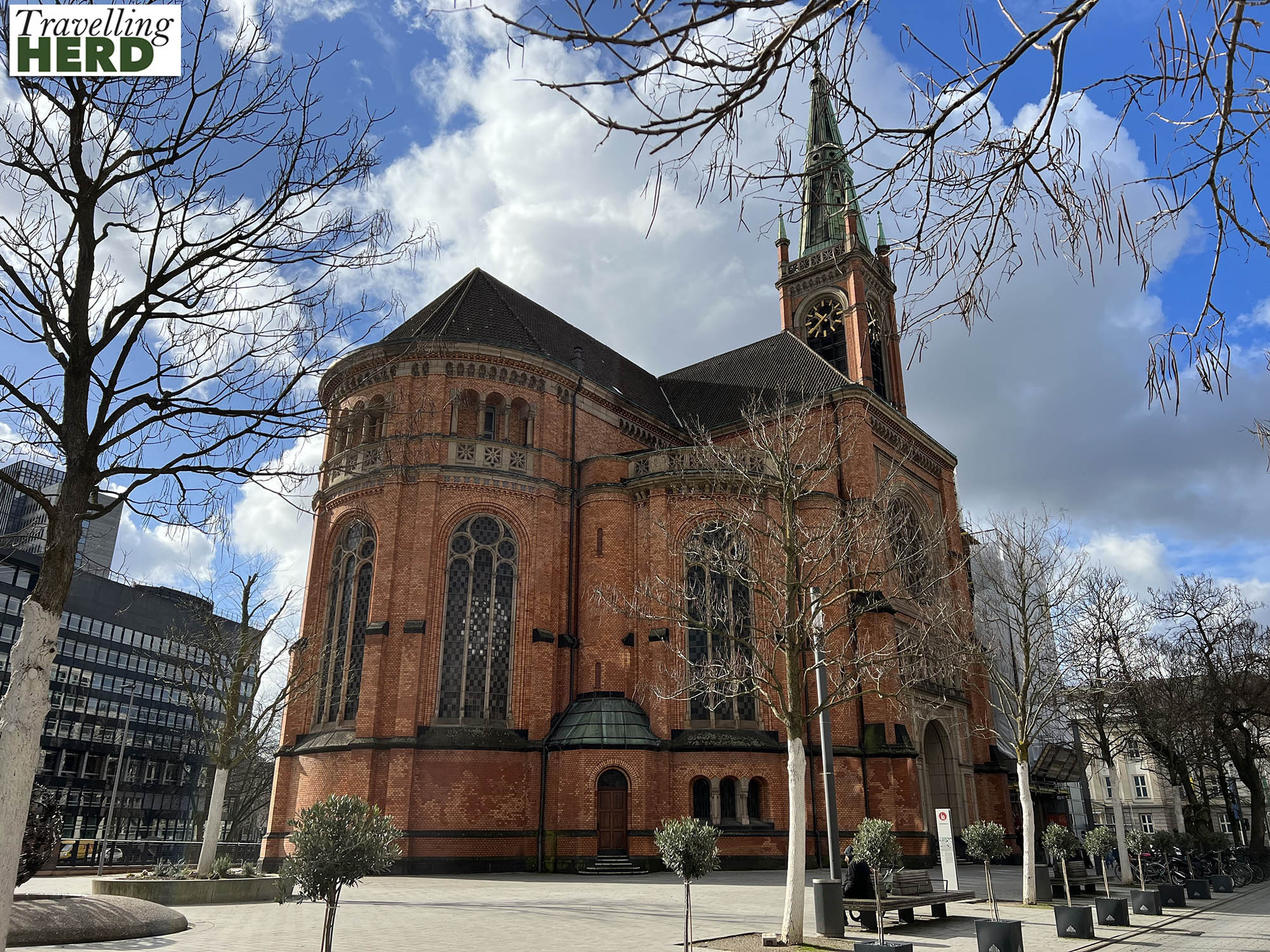
In this square stands a statue of the Prussian Prime Minister and Reich Chancellor Otto von Bismarck, which was originally unveiled at a different site in 1899. Here you can also see Schmied mit Knabe [below] a bronze sculpture of a blacksmith explaining his trade to a young boy, sitting on the edge of an empty pedestal. The explanation seems to be quite alarming.
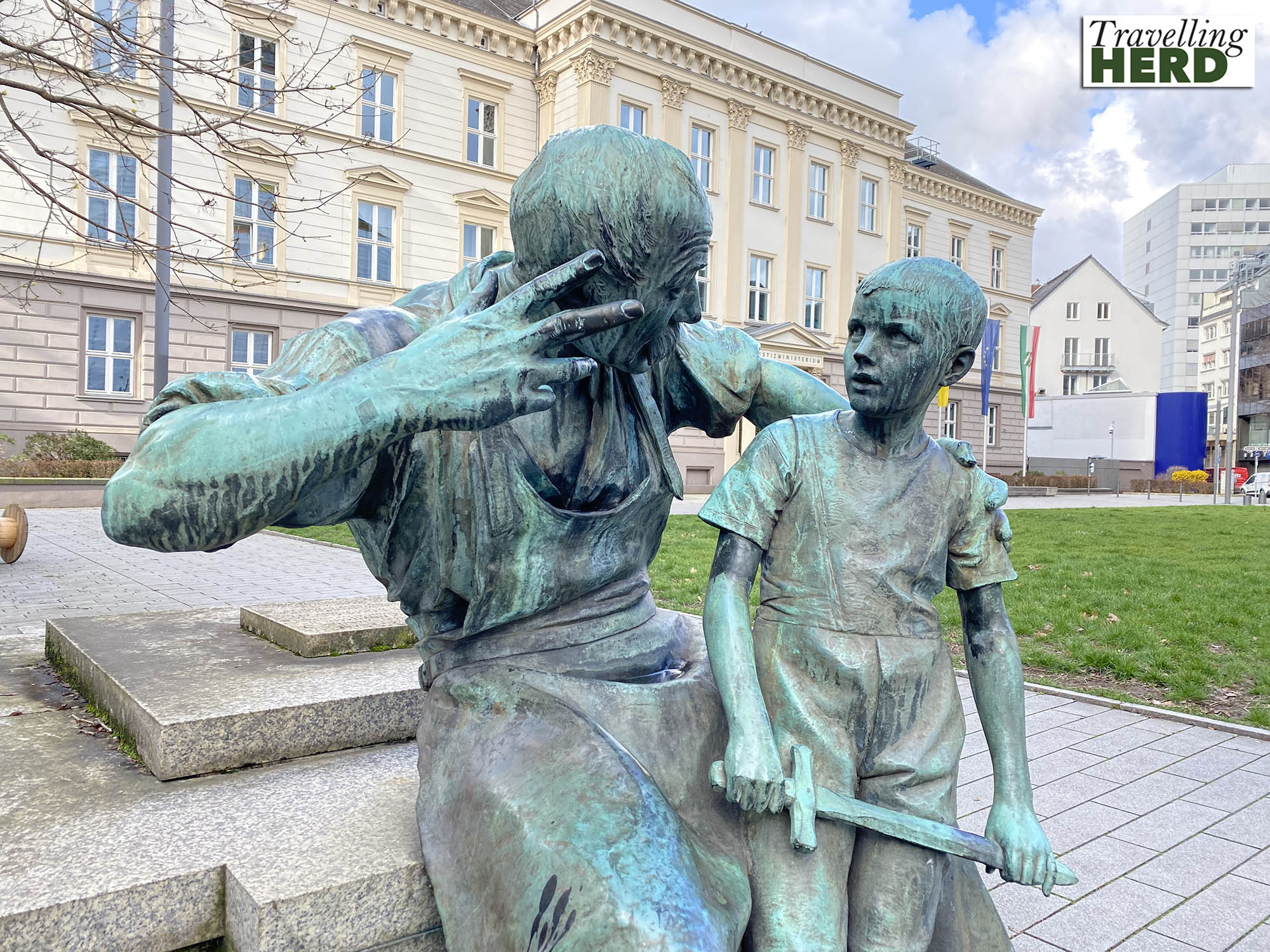
As we were close by, we returned to the Tritonenbrunnen which this time was completely deserted so we were able to take a photo from a better angle, devoid of tourists. . .

. . . and admire the decorative ironwork railings, featuring birds and insects on the bridge on Theodor Körner Straße.
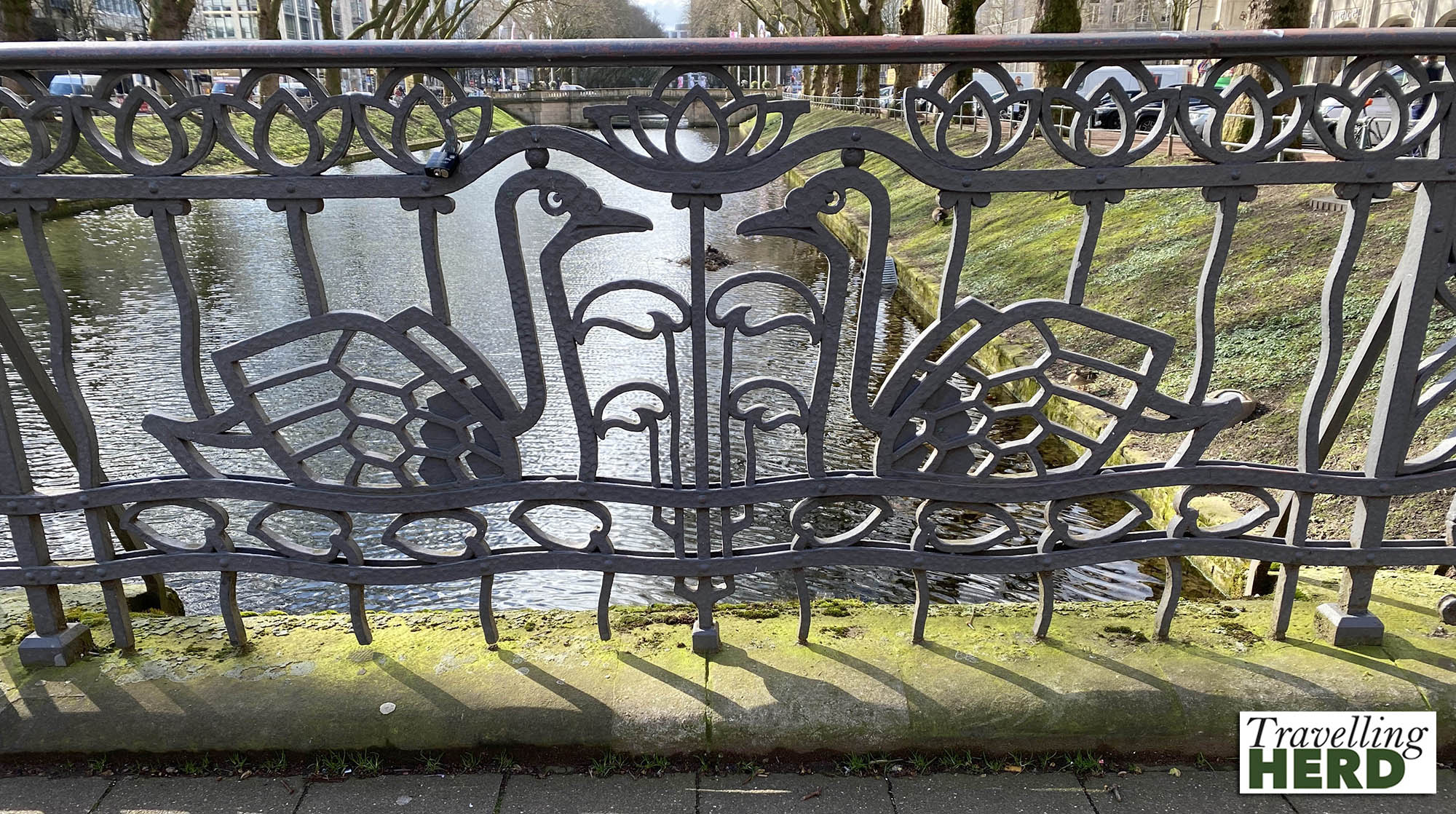
Our route then took us to Mittelstraße where we passed the sculpture, “Auseinandersetzung” [Conflict], created by the artist Karl-Henning Seemann. It depicts two life-size bronze figures comprising a young man of the ’68 generation and an older gentleman with the beginnings of a paunch, who are in obvious disagreement.
Robert thought he could mediate.
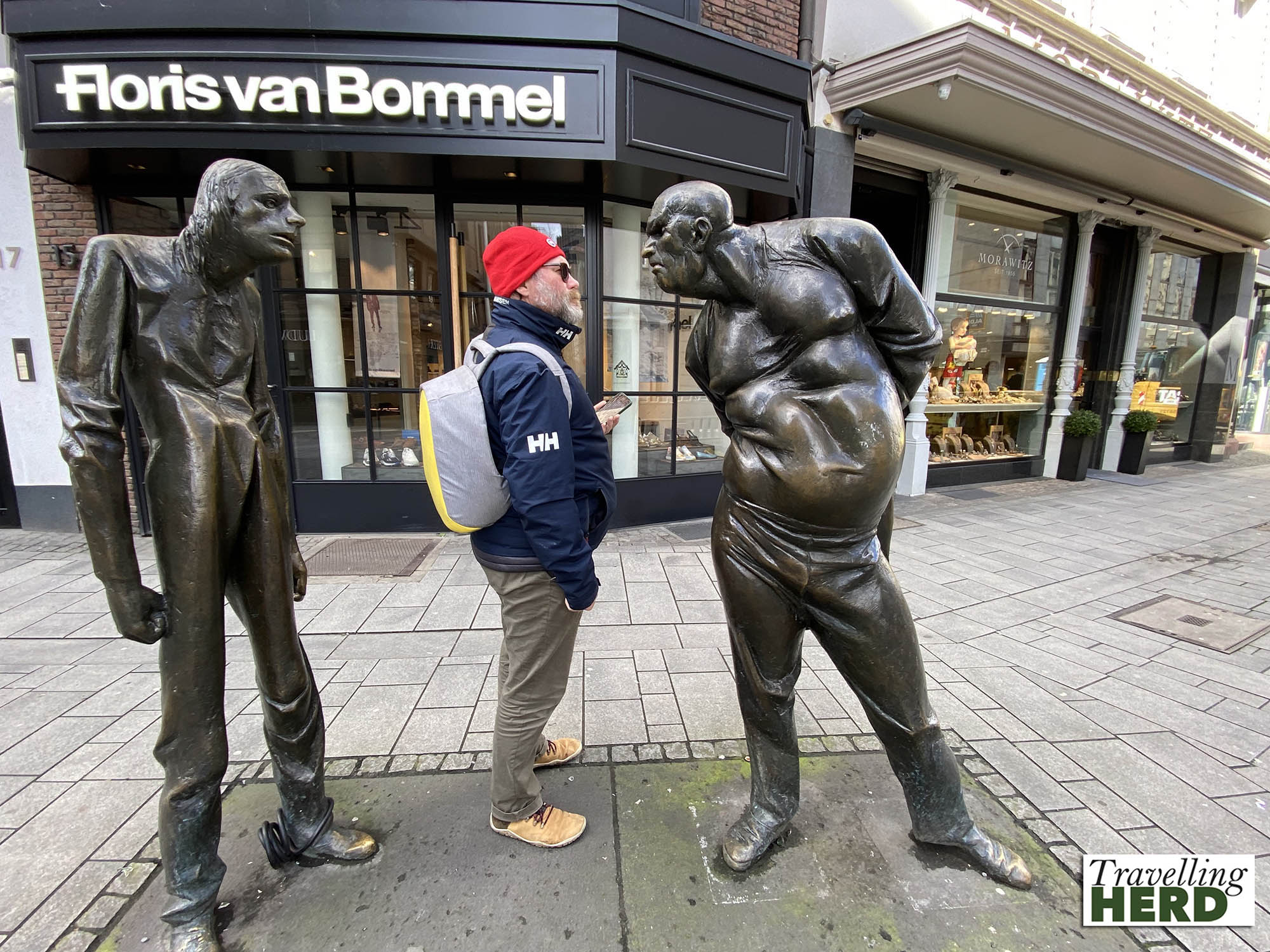
From here we went to Carlsplatz Markt which is described as the city’s most important market square. The market has the capacity for over 60 stalls but whether because it was a rainy Monday or because of the national rail strike, not all the stalls were open. There were nevertheless some magnificent colourful displays of fresh produce.
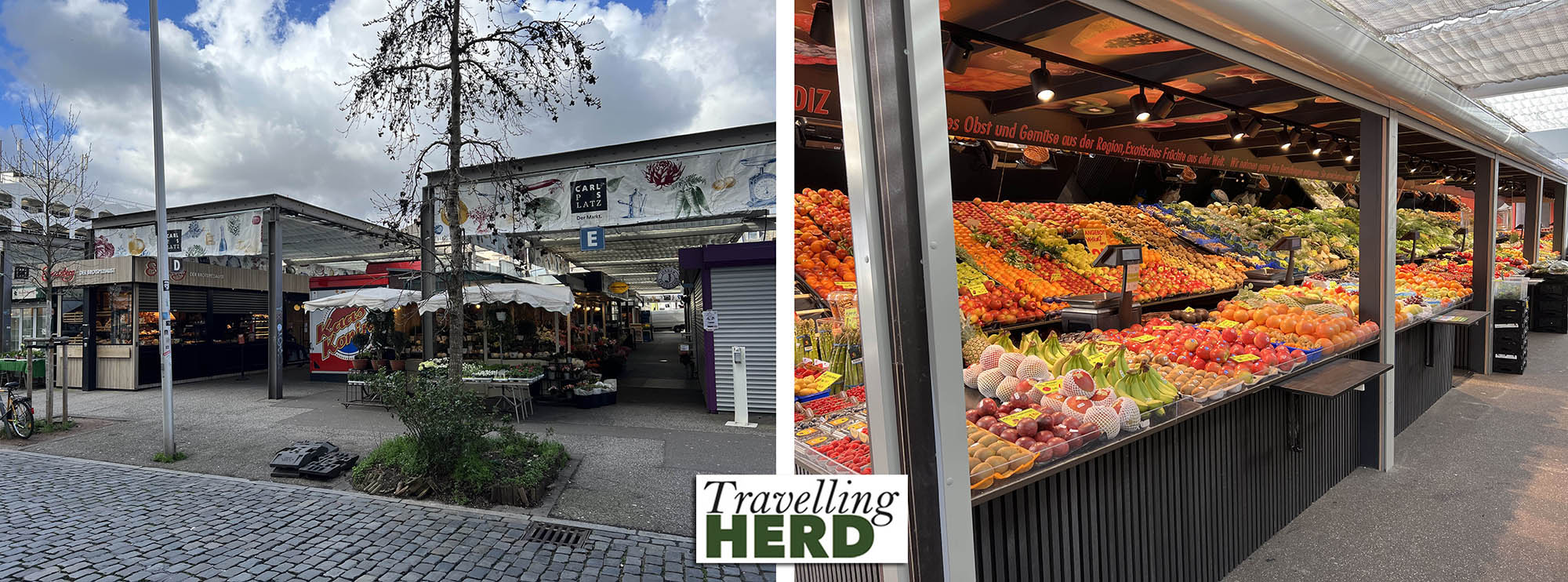
A wide range of cabbage was available [below right]. Matilda thought the strawberries looked particularly luscious and tempting and was intrigued to see Das Kartoffelhaus, an entire stall dedicated to selling different varieties of potatoes [below left].
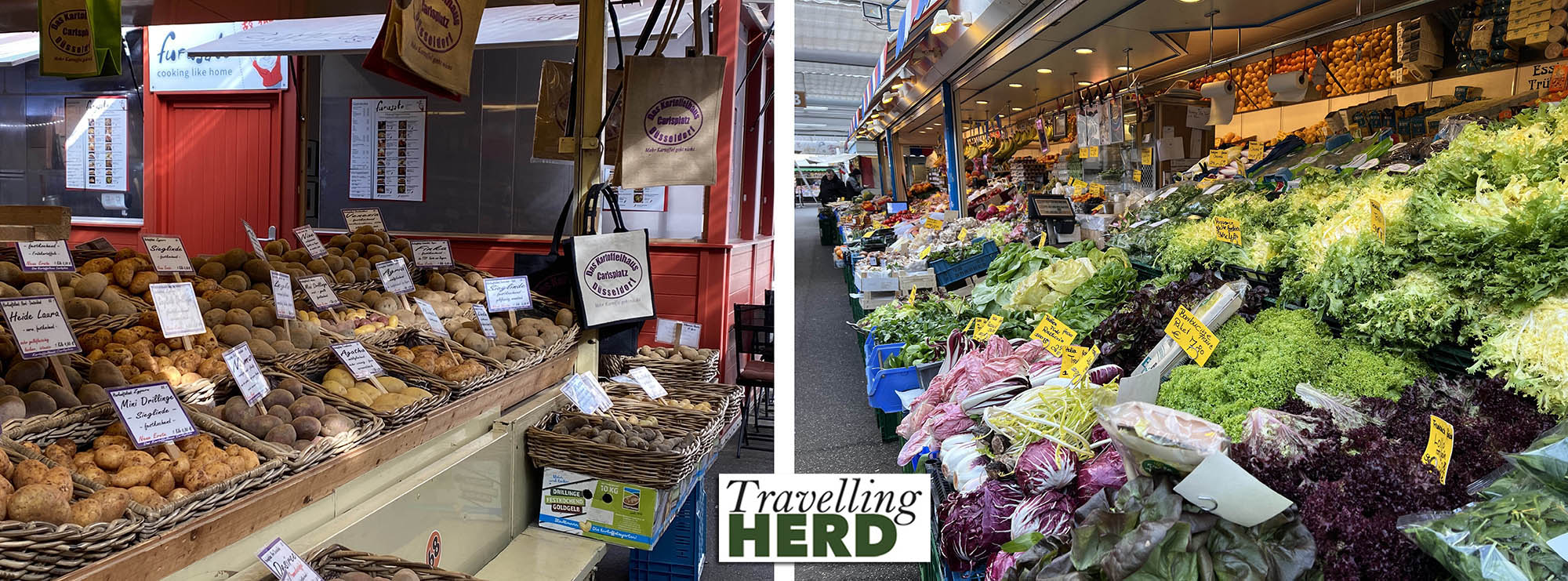
We discovered that cartwheeling is apparently an old tradition in Düsseldorf and the symbol is found on manhole covers and several fountains as well as the door knockers of Lambertuskirche. This tradition was commemmorated in 1954 by the installation of the Radschlägerbrunnen [Cartwheeler’s Fountain] in Burgplatz although unfortunately when we visited this was drained of water. It is surrounded by well-tended, pollarded trees – see also the feature photo – of which there are plenty in the city. We were not quite sure how we had overlooked the Radschlägerbrunnen the day before as it was right by the Stadterhebungs Monument.
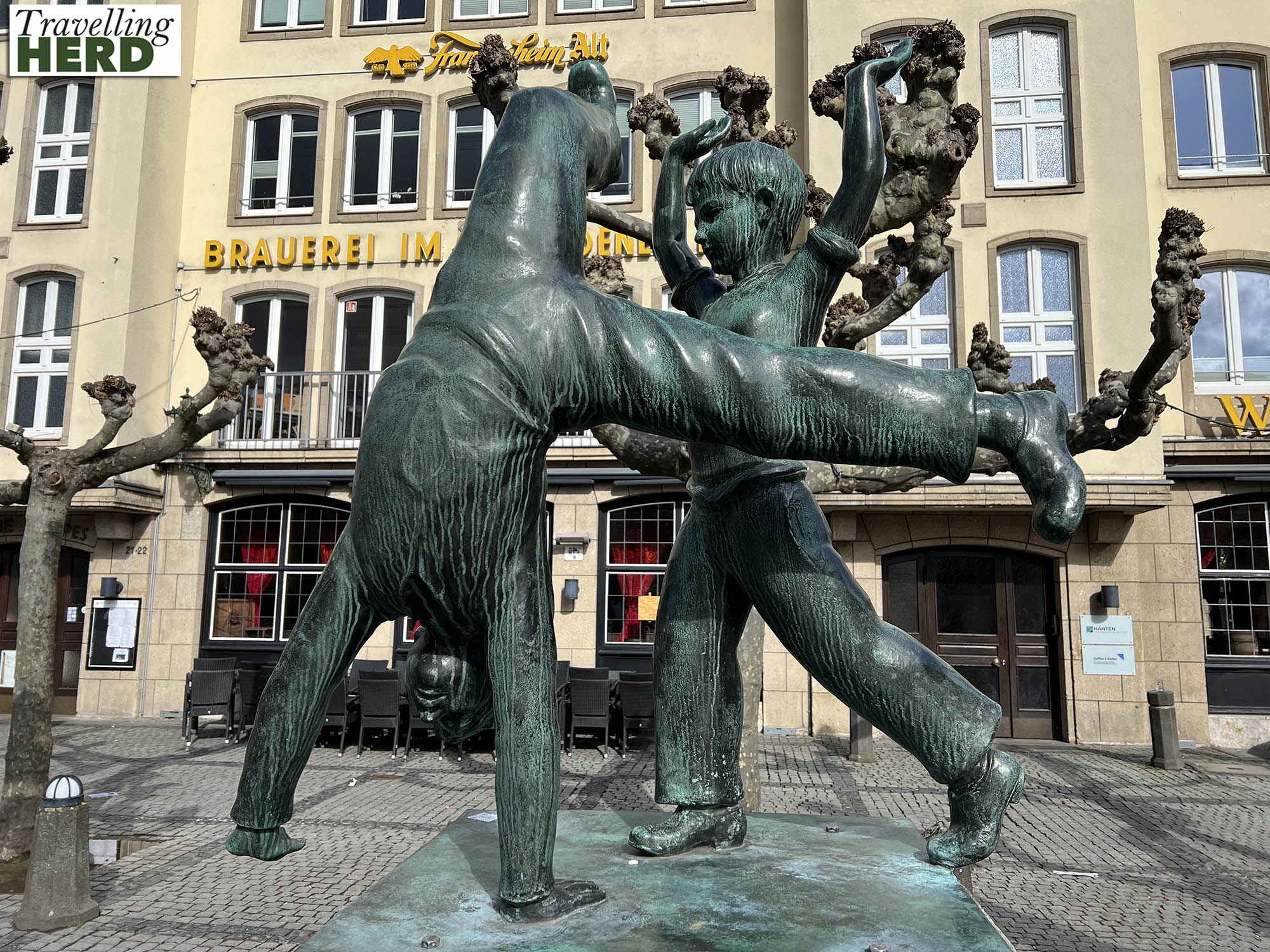
From here we went to the Pfarrkirche St Andreas [Church of St. Andreas] which is not only a baroque Roman Catholic parish church but is also the priory church of the local community of Dominican Friars who are responsible for the Lambertuskirche.
Built between 1622 and 1629 it is considered to be an architectural masterpiece from the transition between the end of German renaissance and the start of the Baroque era. The ceiling is indeed beautiful.
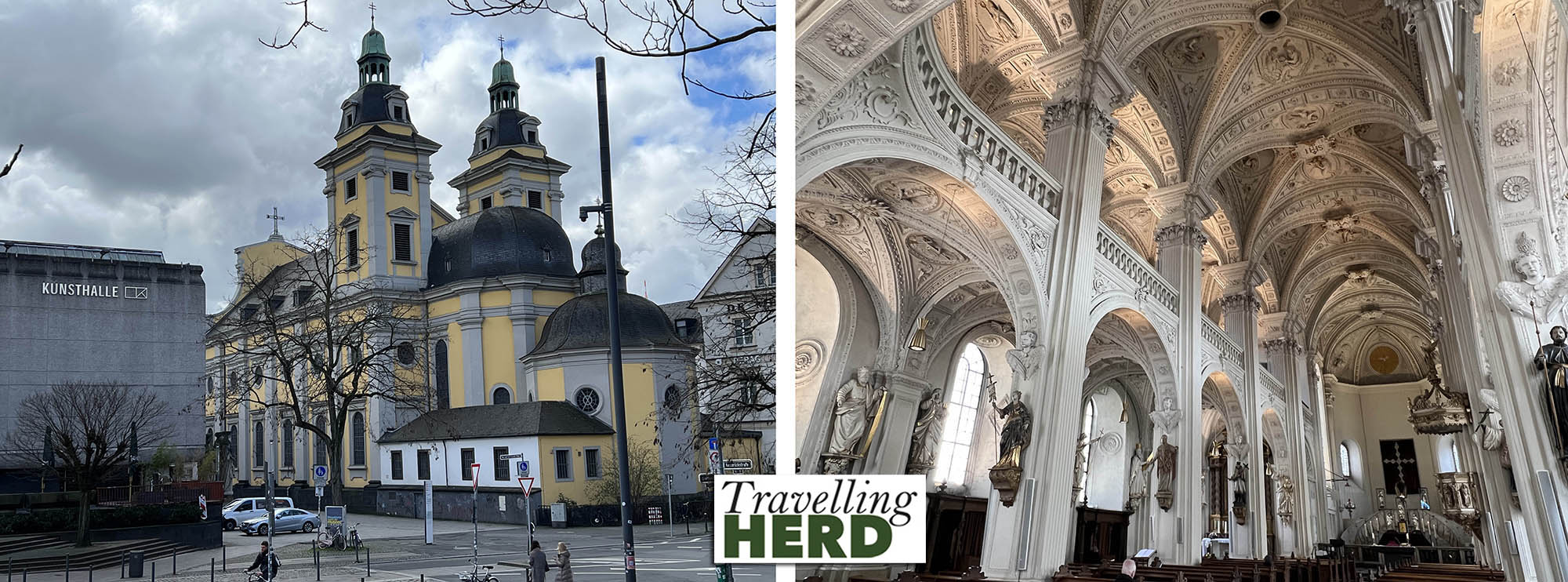
At one end of Königsallee is Kö-Bogen which is described as a ‘building complex and open space structure’. It was developed when the tram junction which previously occupied the site was no longer needed.
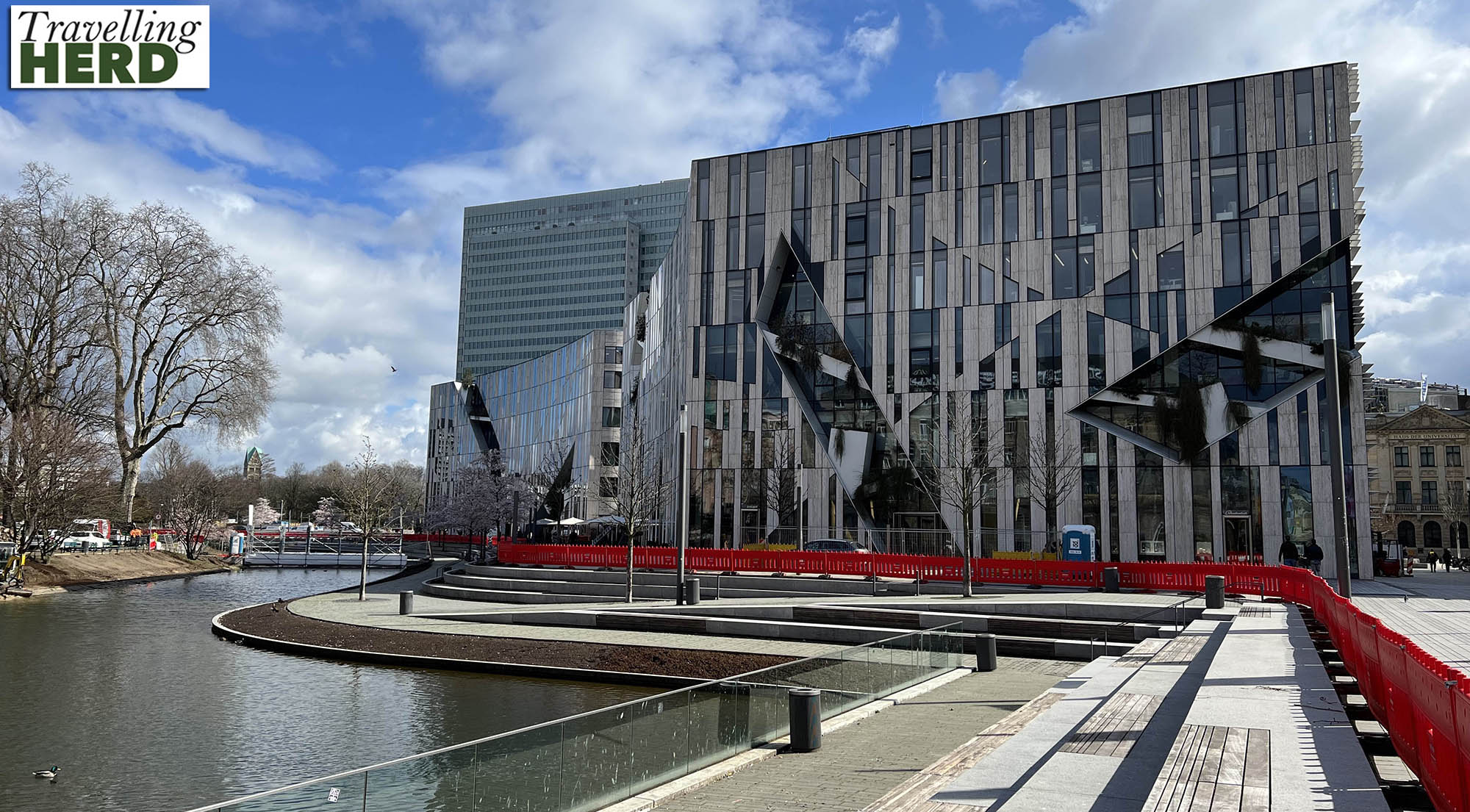
Nearby is Schadowstraße, a shopping street which cuts through downtown Düsseldorf, starting at Königsallee. Schadowstraße is named after the German Romantic painter Wilhelm von Schadow and again, either because of the weather or the strike, was quite deserted.

This shining tower is part of the Kö-Bogen building complex.
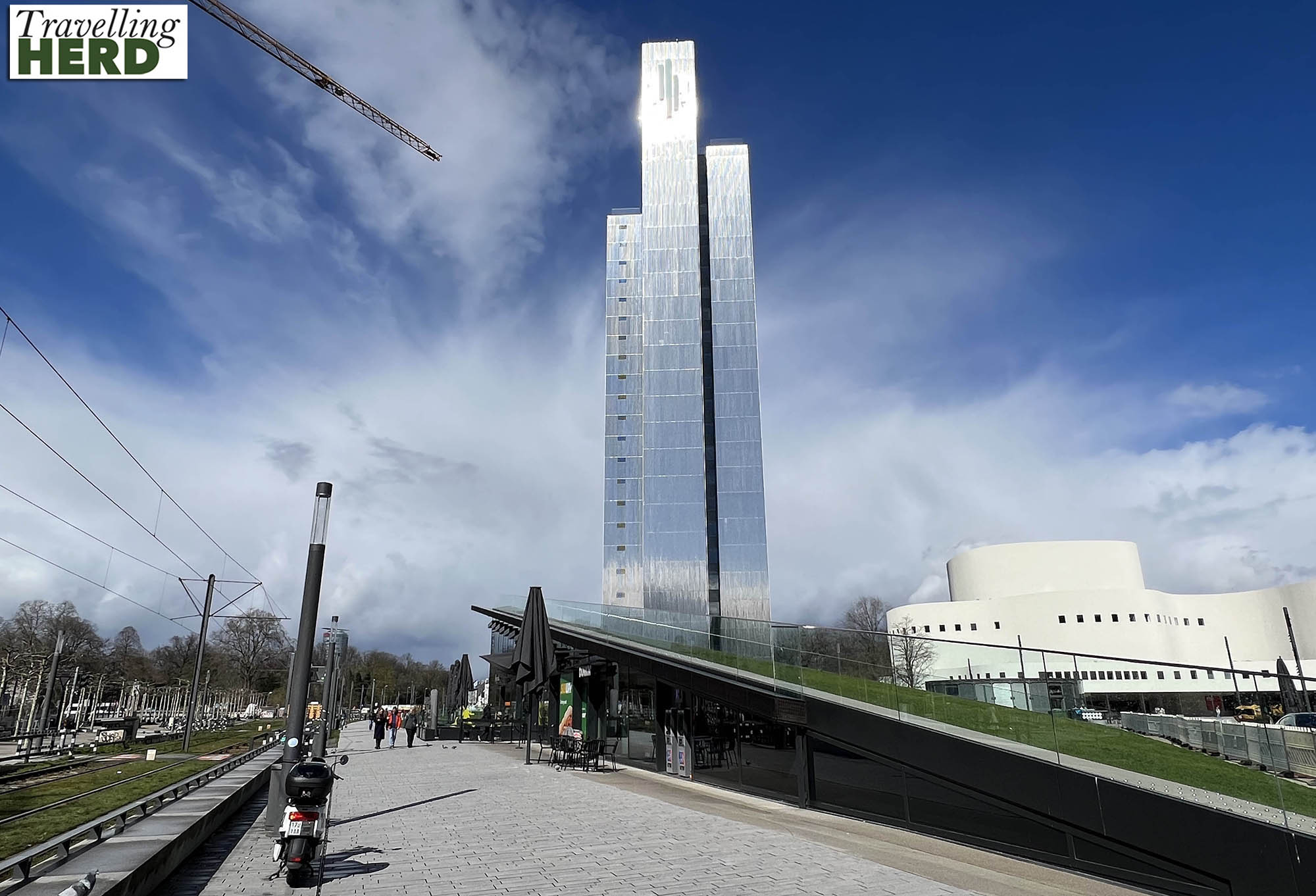
There were queues outside Cinnamood the first time we passed and the reason was apparent when were finally able to look in the window.
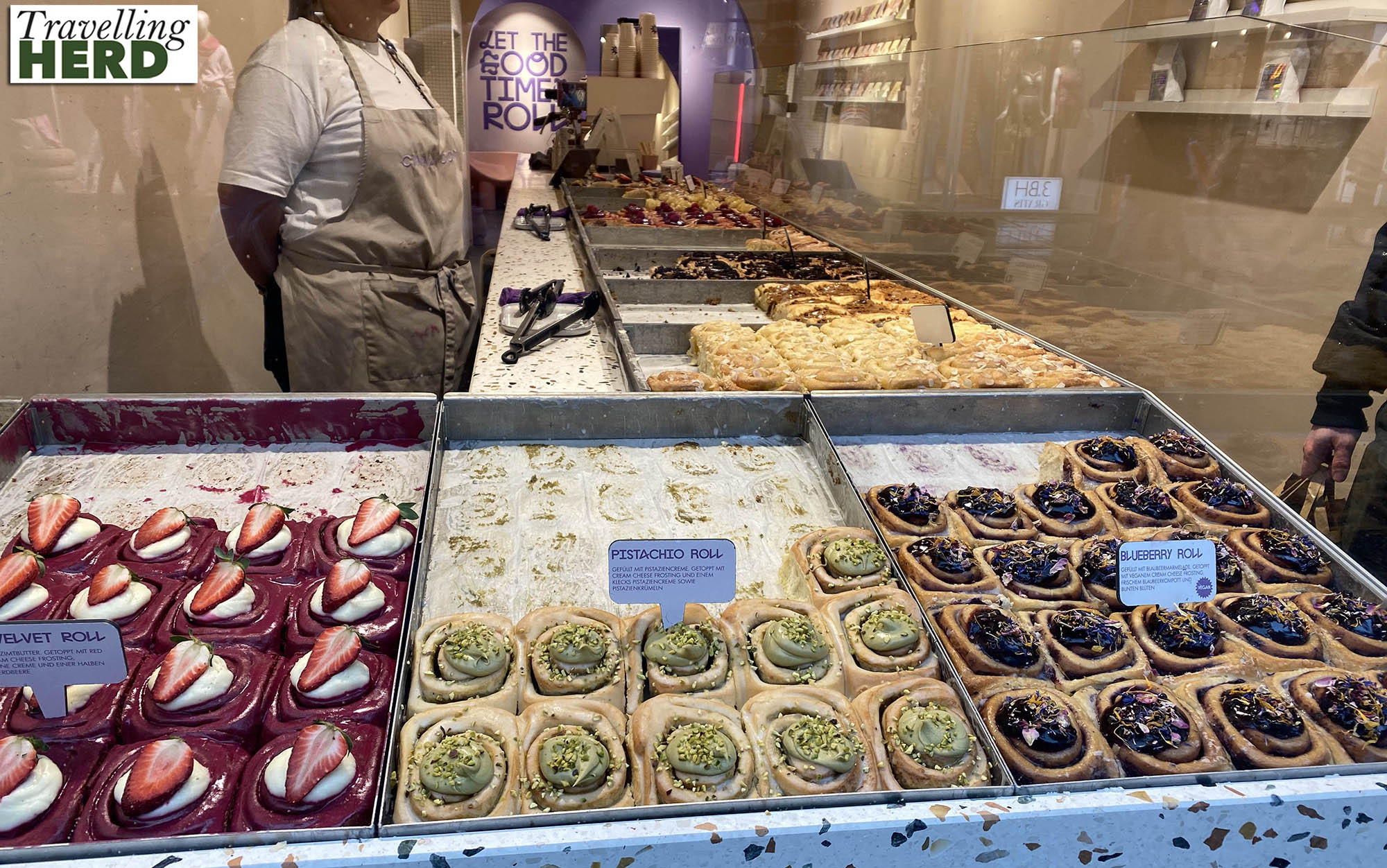
Knowing that a display was imminent we also returned to Schneider Wibbel Gasse to enjoy the full musical clock experience which we include here. Some readers may feel that the original two second burst in our previous post was sufficient.
At this point, we were cold and we decided to seek shelter in a hostelry. Rather than altbier, Robert wanted ‘a proper sized pint’ so we went to the Irish Bar Bei Fatty’s in the old town and nabbed a seat by a radiator. The interior boasts a collection of team scarves and colourful stained glass. The staff are all friendly and the manager Niall, was particularly chatty [see selfie of the day] when we appeared as his first customers of the day.
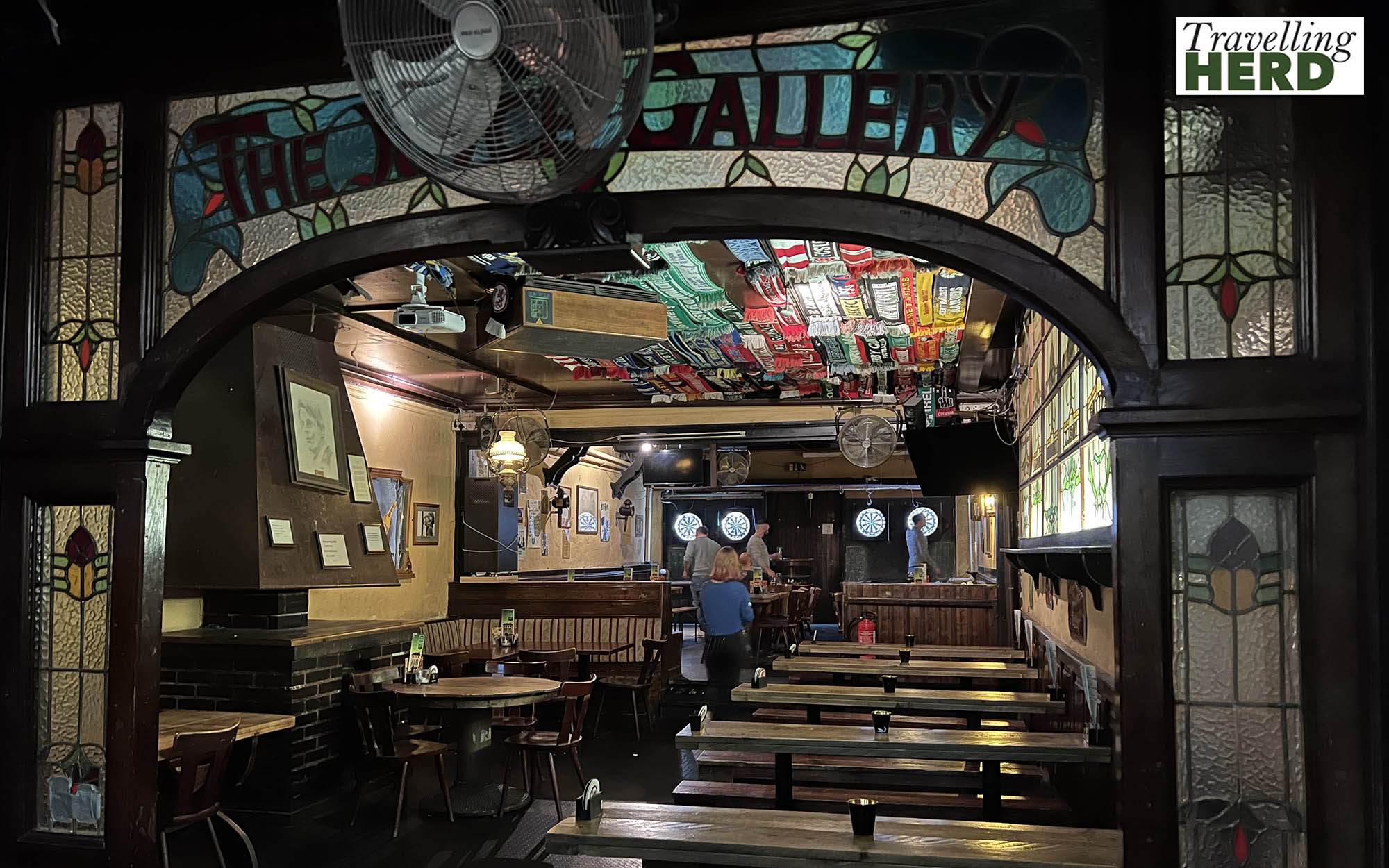
Robert had spotted the Openfrische Schwienshaxe [pork knuckle] at the Hausbrauerei Zum Schlüssel and also wanted to video the arrival of a new cask of altbier.
The waiter entered into the spirit of things and helped Robert to get the Video of the day [see below]. First the barrel was propped up at an angle and then when the old barrel had descended, he listened out for signs of the new cask being raised.
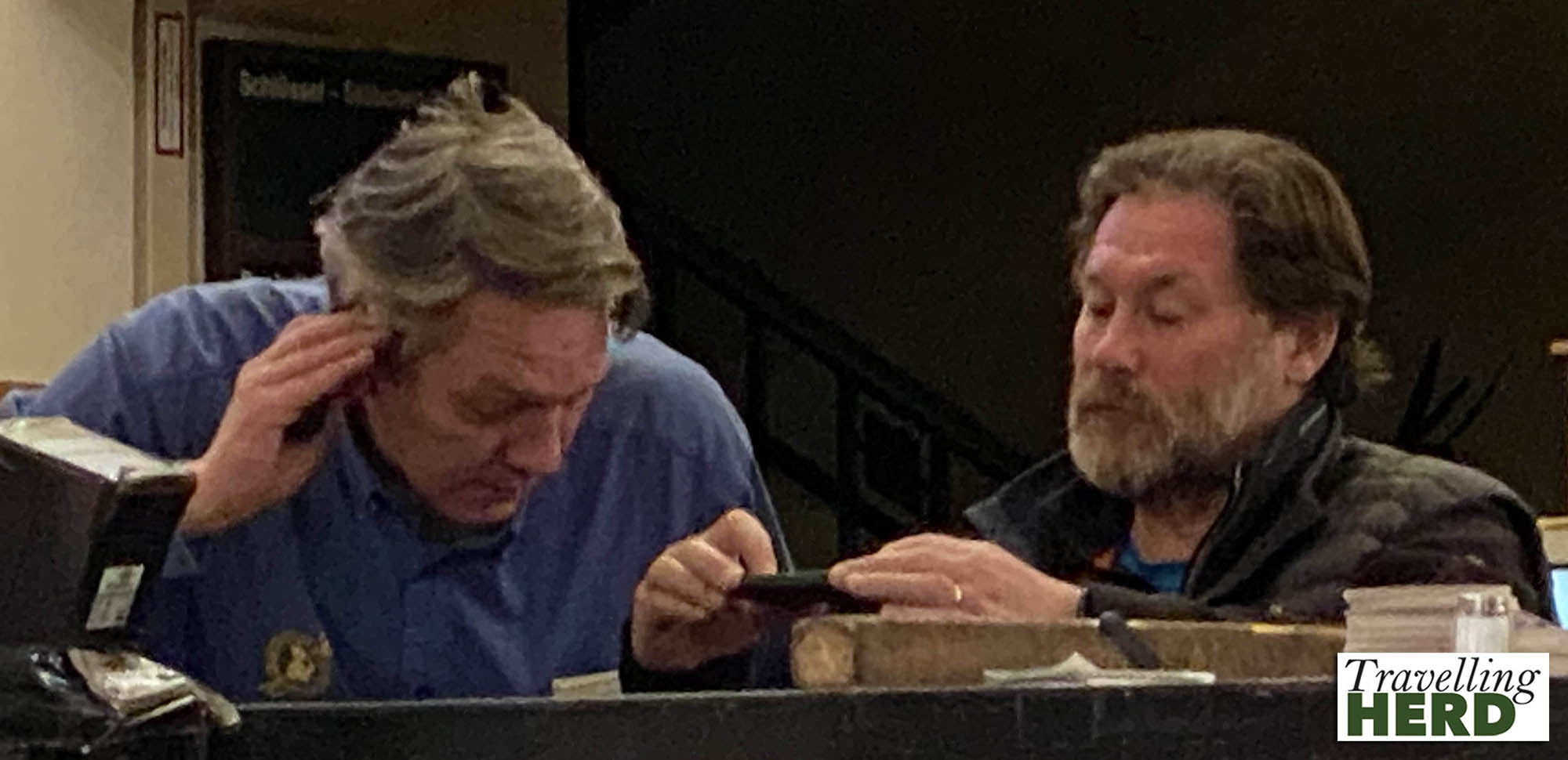
When Matilda asked our waiter for advice about two dishes, he said “You are English aren’t you? You put vinegar on your chips. You will like this.” She went with his suggestion of braised beef but in fact one Openfrische Schwienshaxe would have been enough for the two of us.
Unfortunately our strike disruption was not over – when we returned to our hotel we found that our key cards, carefully reprogrammed by the woman on reception the day before, did not work. Tempers were frayed on both sides of the reception desk as three members of staff tried to work out what she had done. When we finally gained access to our room, which still had all our luggage in, Robert set his alarm so that he could go down early for a proper resolution of the issue.
Video of the day:
Selfie of the day:
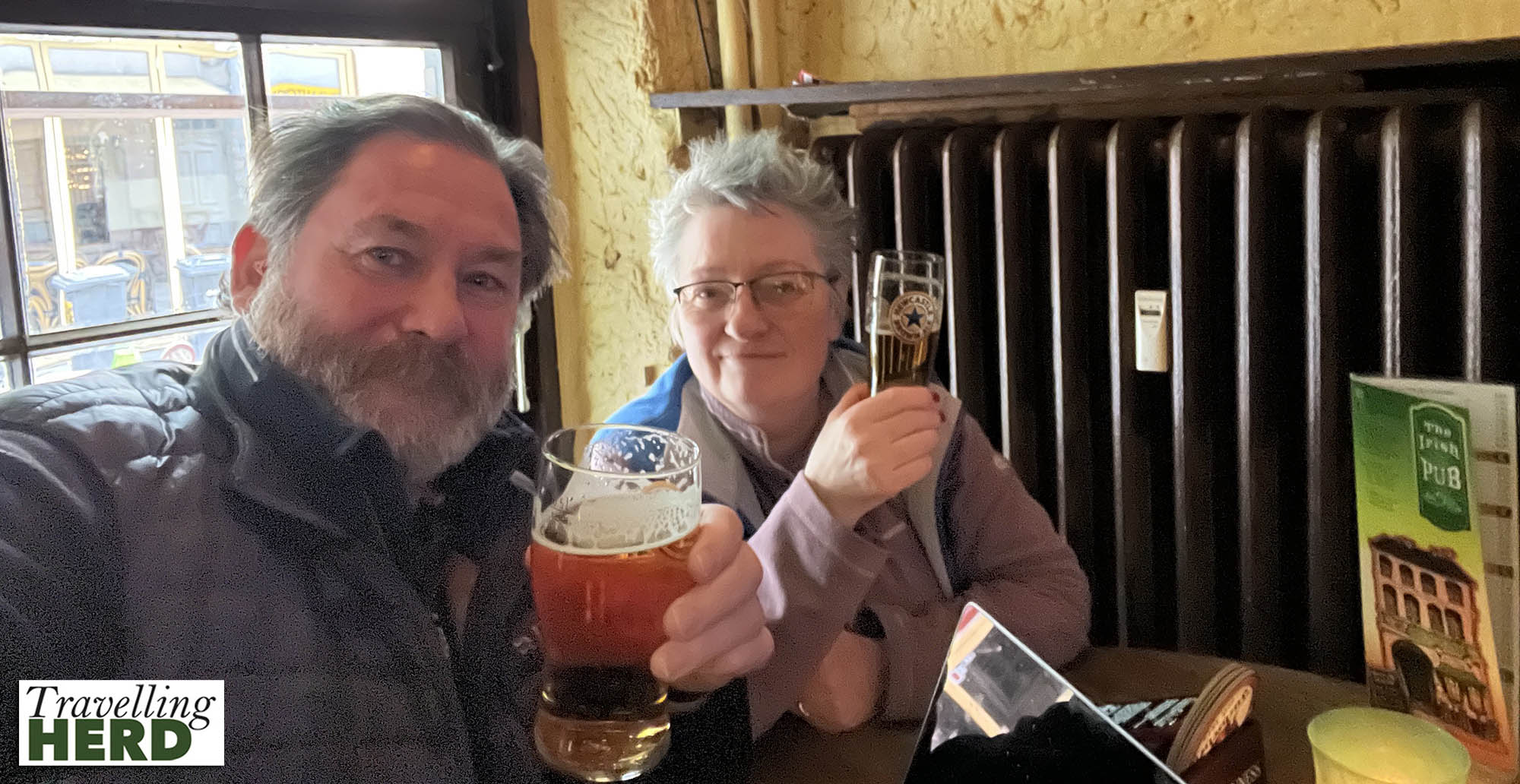
Dish of the day:

Route Map:






